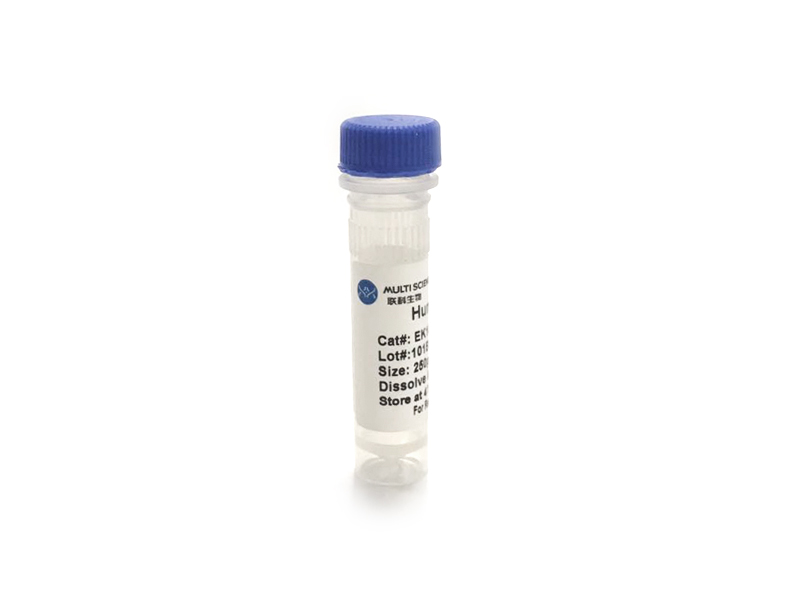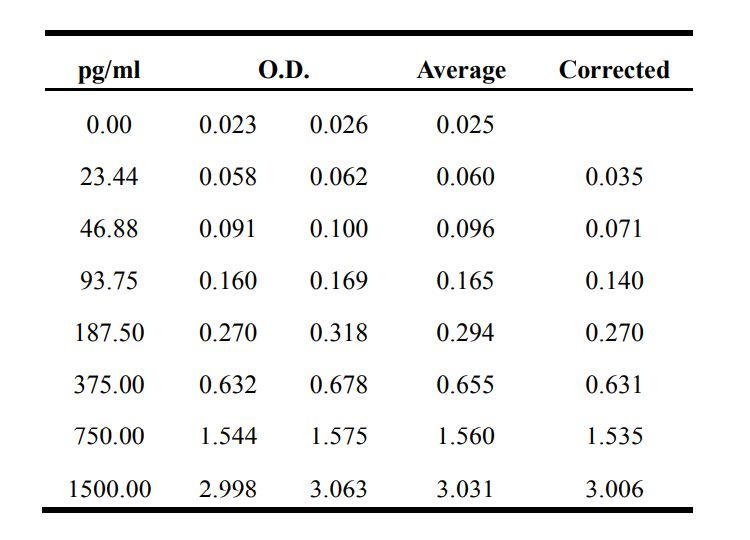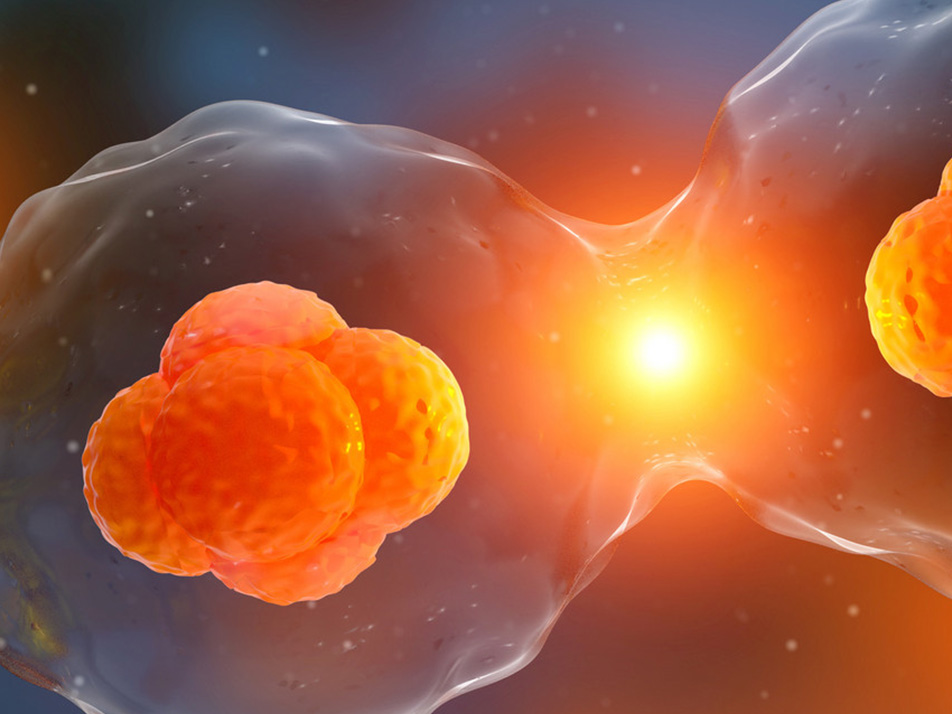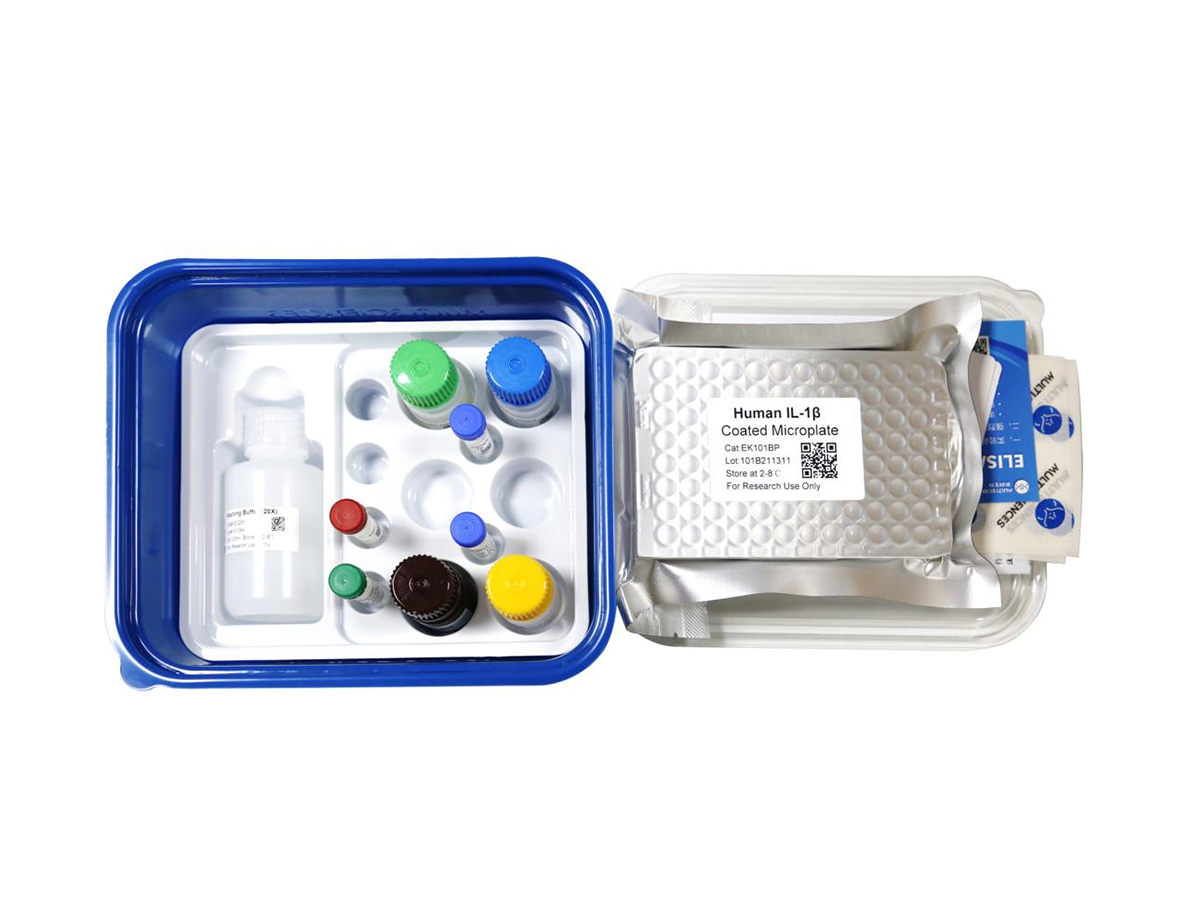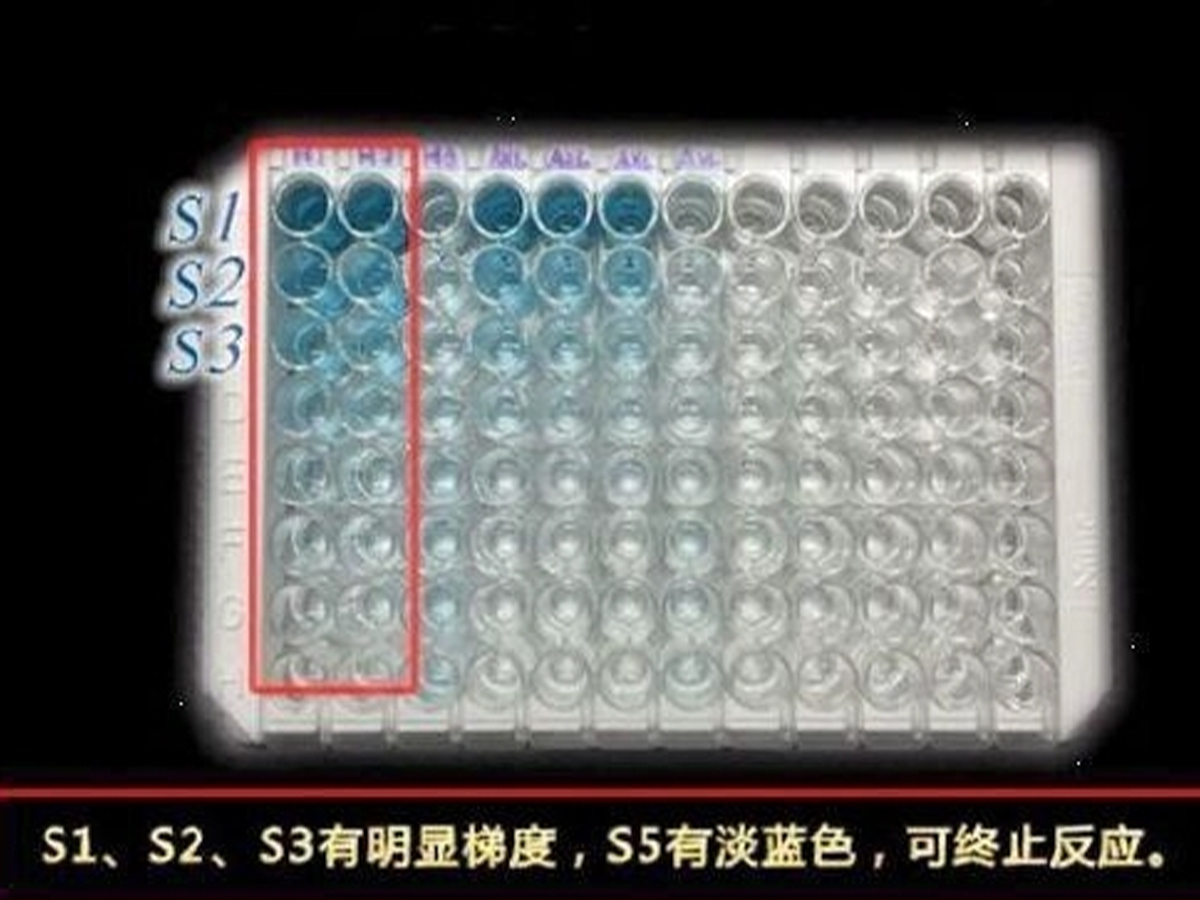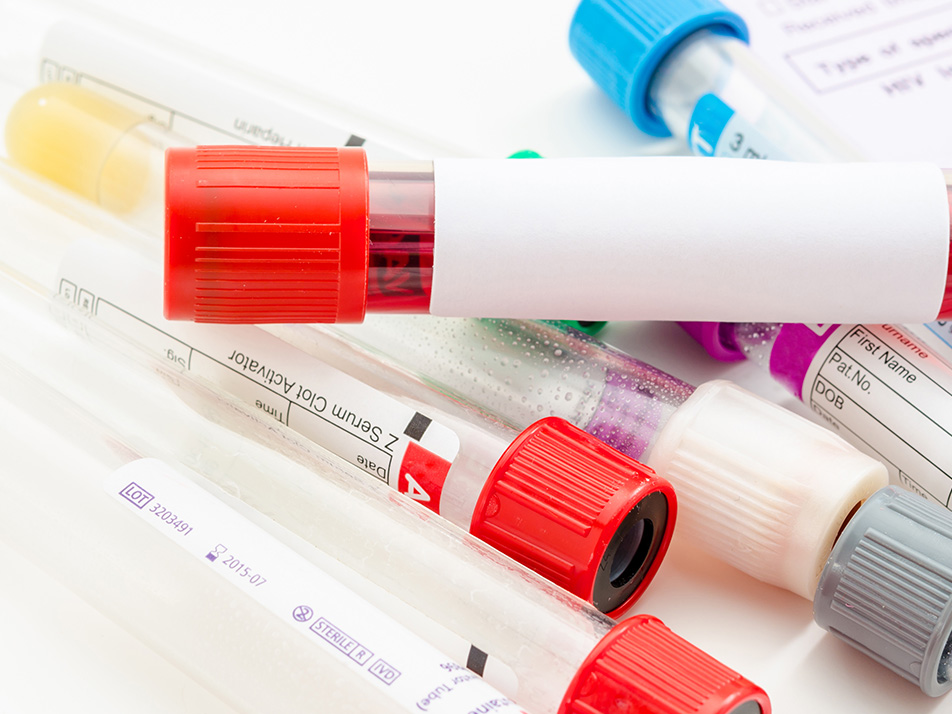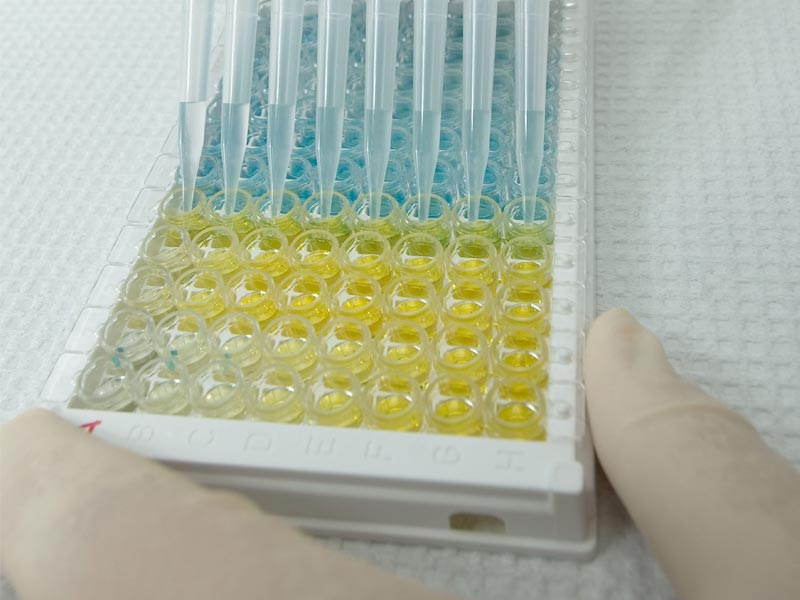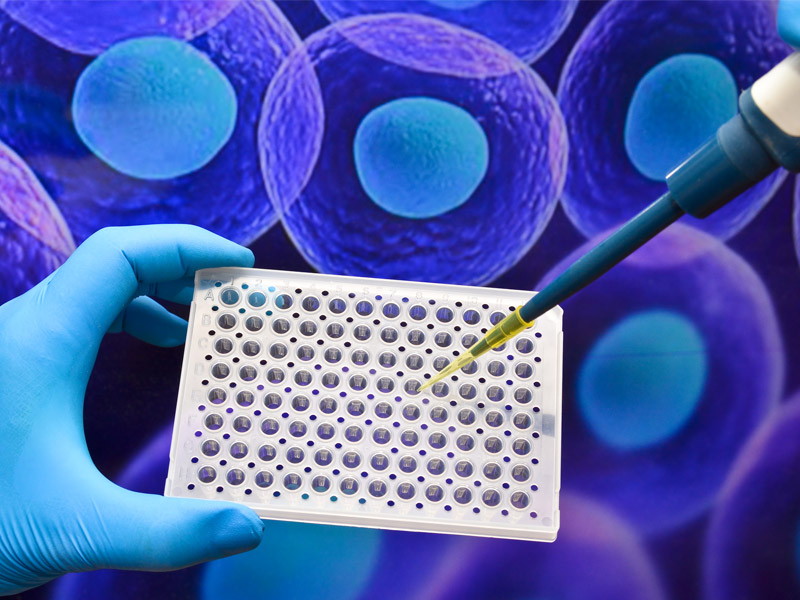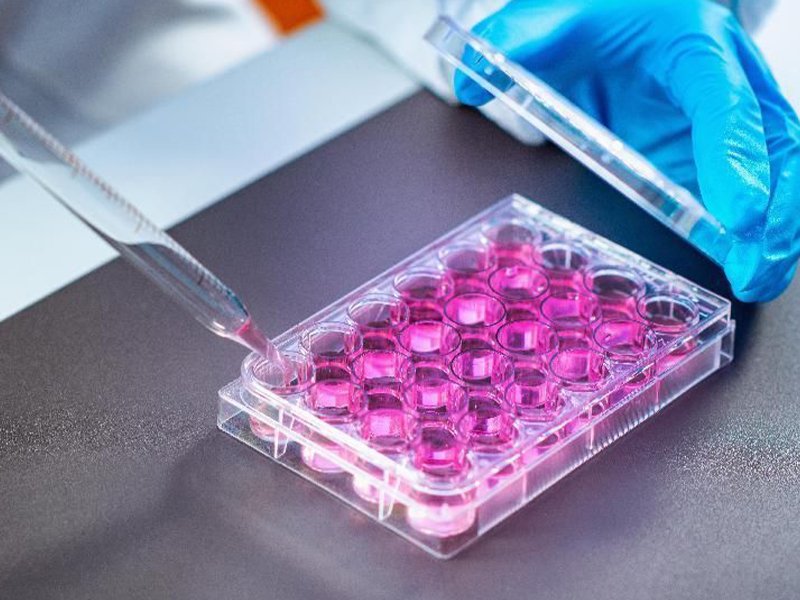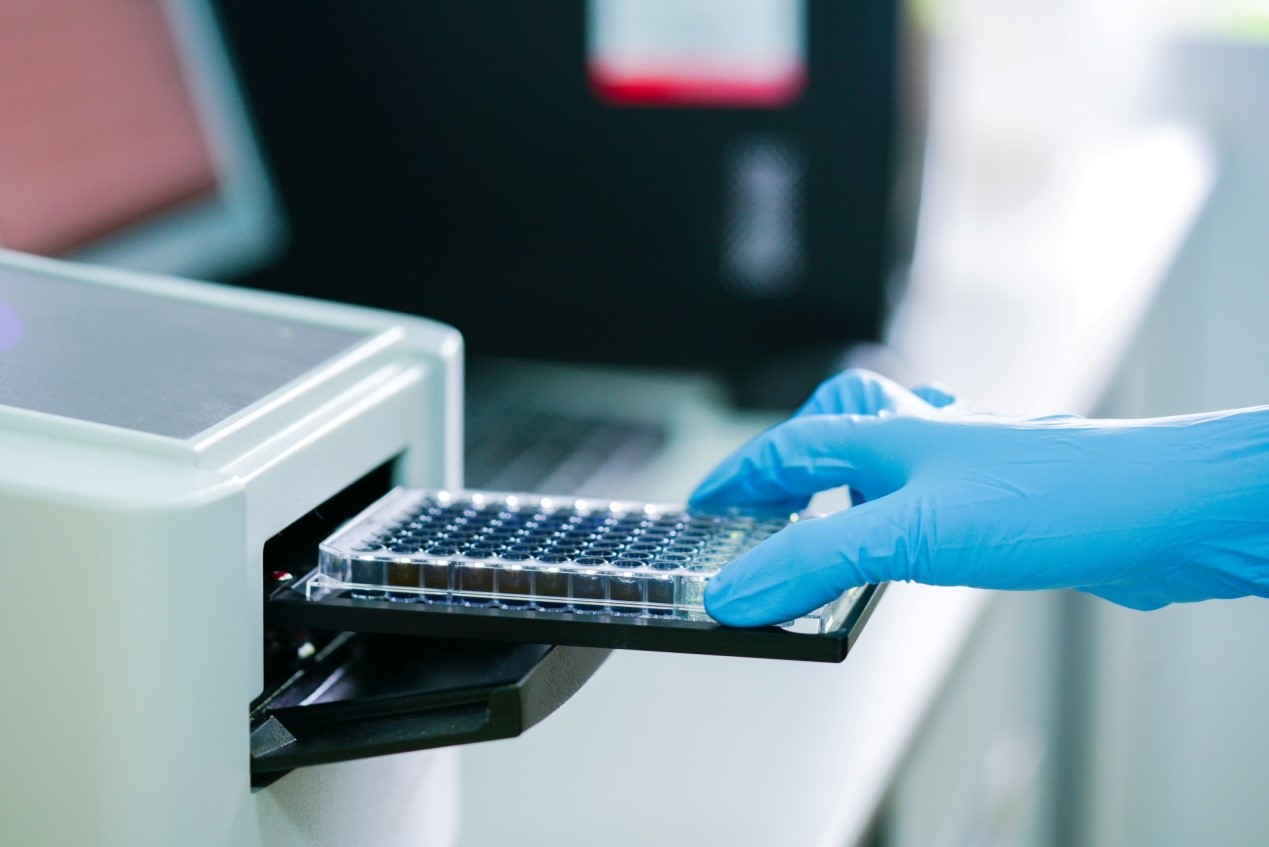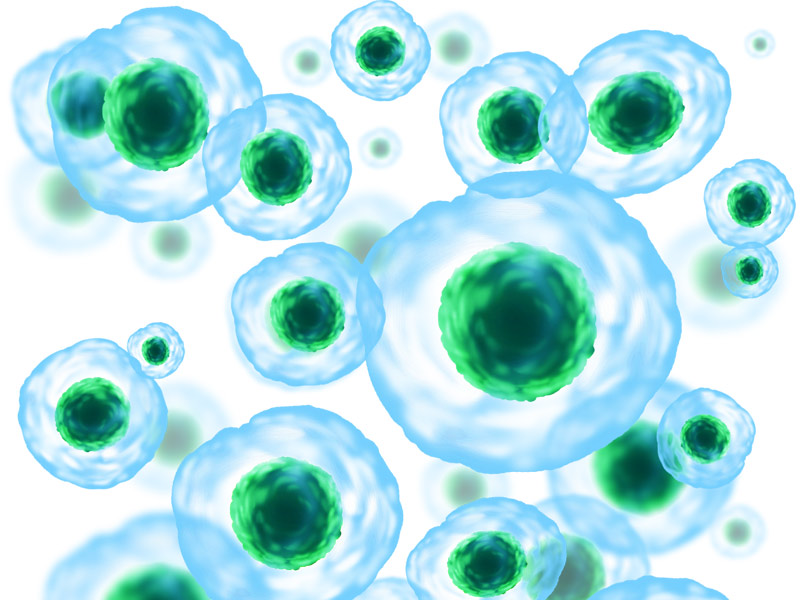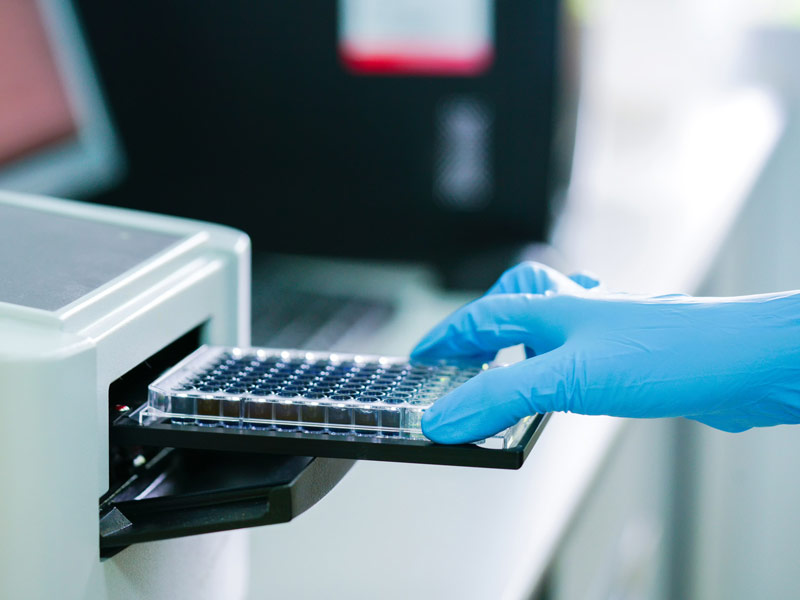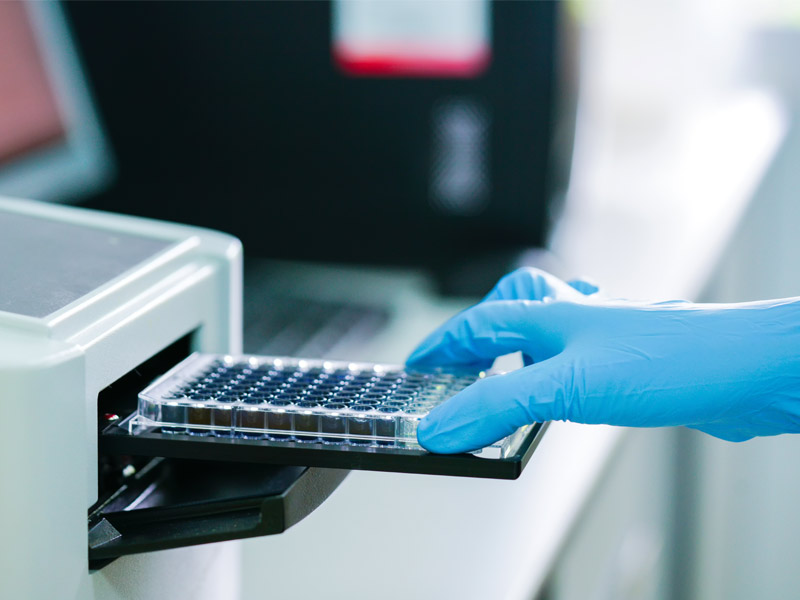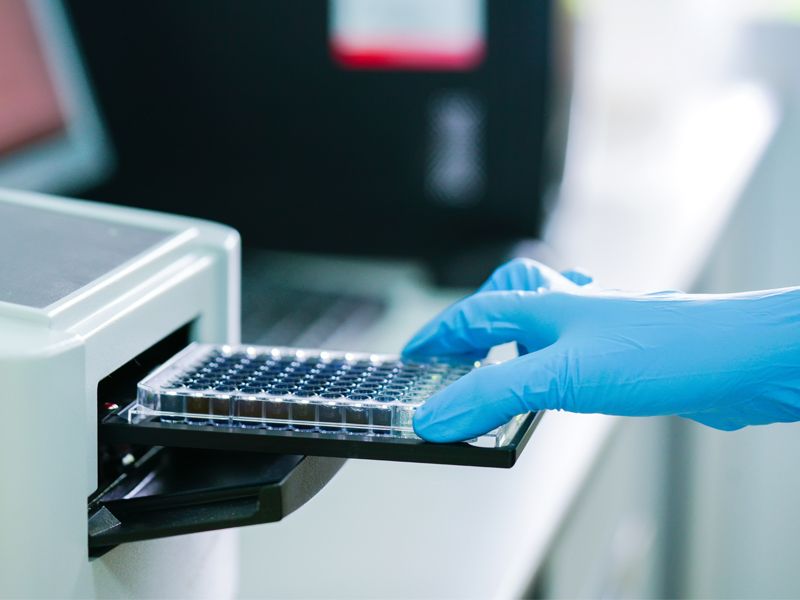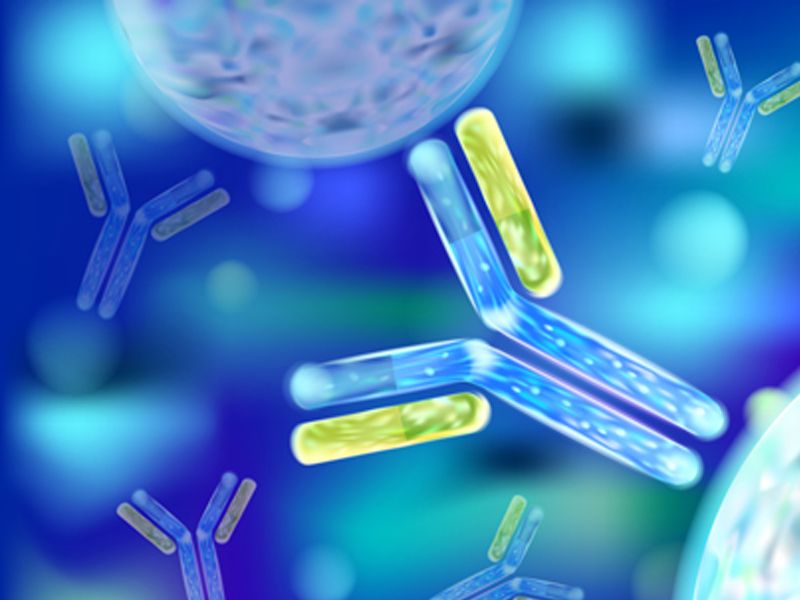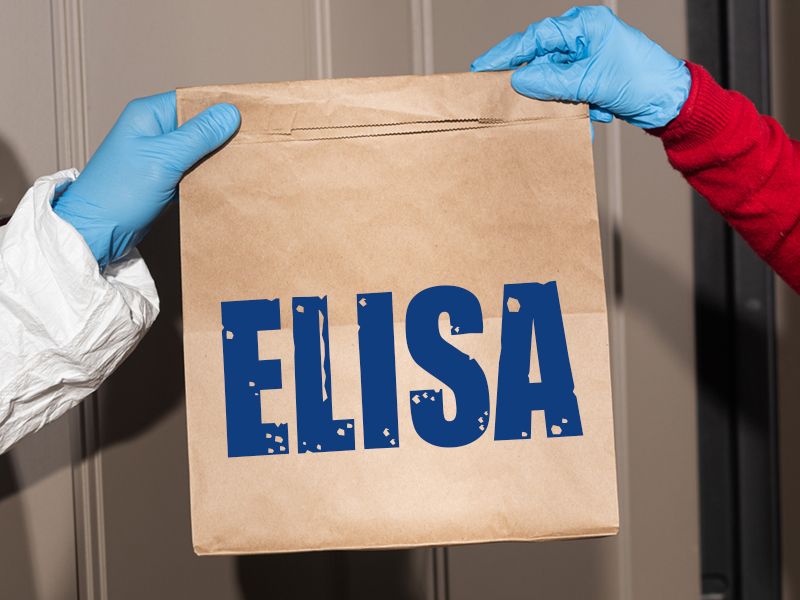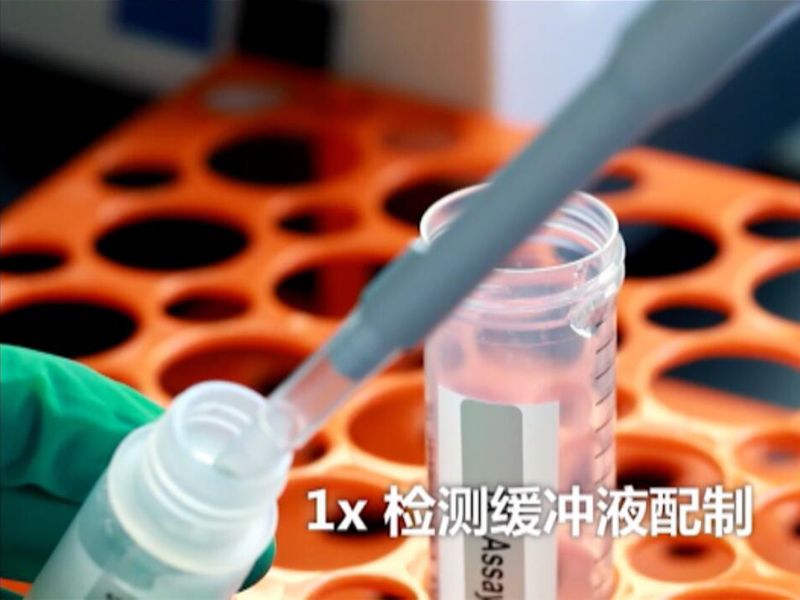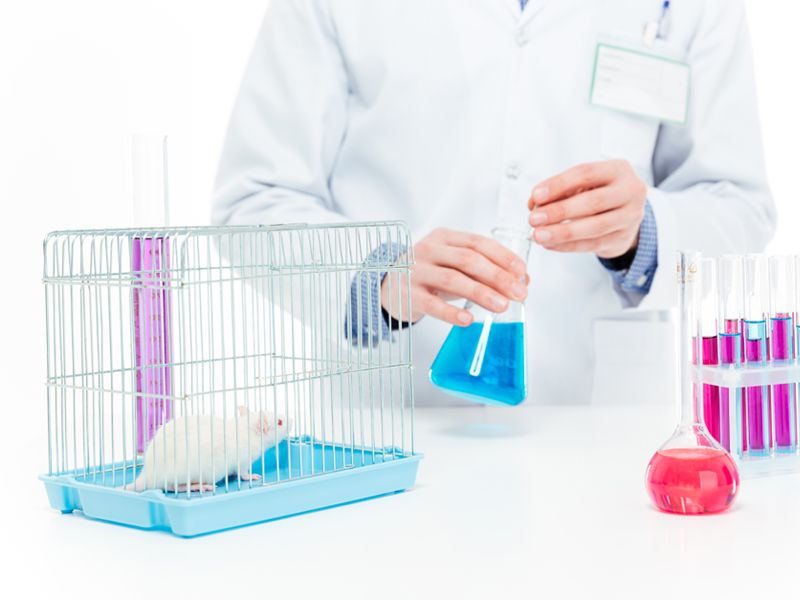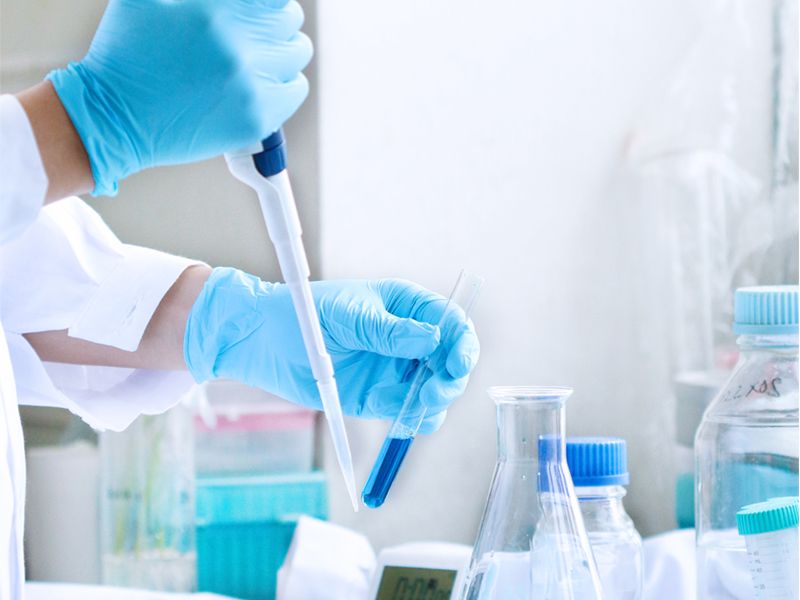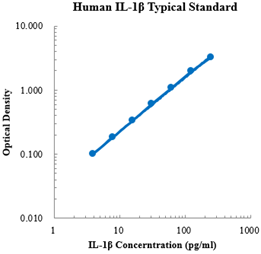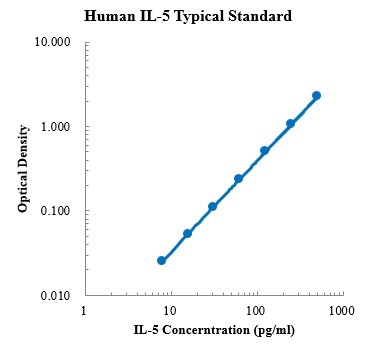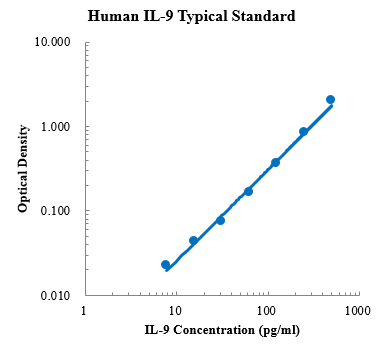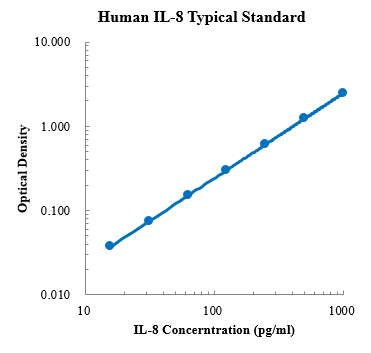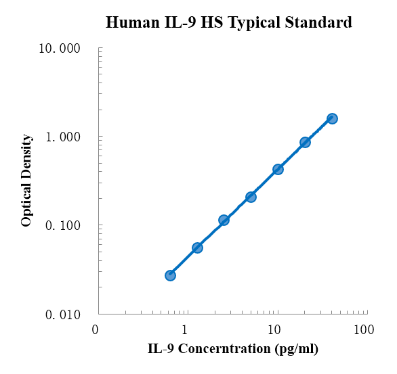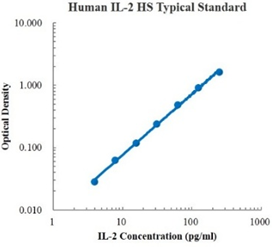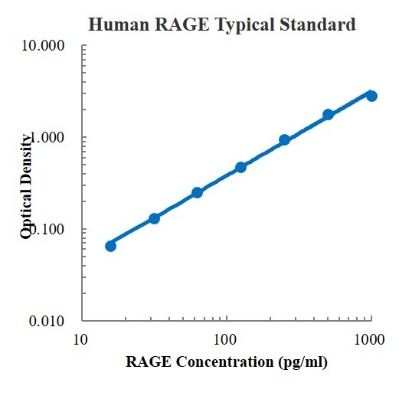Mouse CCL2/MCP-1 High Sensitivity Standard (小鼠CCL2/MCP-1 高敏 标准品)
¥180.00
- 分子靶点:CCL2, MCP-1, MCAF, SMC-CF
- 种属:小鼠 (Mouse)
- 试剂盒:EK287HS
- 保存:短期4℃保存,长期-20℃保存
- 运输条件:4℃蓝冰运输
在售SKU:70-EK287HSS
描述
文章目录[隐藏]
本产品只包含标准品试剂,如需购买试剂盒请点击下图
-
- EK287HS 77 Citations
- 高敏试剂盒
Mouse CCL2/MCP-1 High Sensitivity ELISA Kit检测试剂盒(酶联免疫吸附法)
- ¥2,000.00 – ¥3,400.00
| 商品名 |
Mouse CCL2/MCP-1 High Sensitivity Standard (小鼠CCL2/MCP-1 高敏 标准品) |
|---|---|
| 组分 |
小鼠CCL2/MCP-1冻干标准品 |
| 检测方法 |
双抗夹心法 |
| 样本类型 |
血清,血浆,细胞培养上清及其他生物学样本 |
| 板式 |
管 |
| 保存 |
短期4℃,长期-20℃保存 |
| 运输条件 |
4℃蓝冰运输 |
检测原理:本试剂盒采用双抗体夹心酶联免疫吸附检测技术。特异性抗小鼠CCL2抗体预包被在高亲和力的酶标板上。酶标板孔中加入标准品和待测样本,经过孵育,样本中存在的CCL2与固相抗体结合。洗涤去除未结合的物质后,加入生物素化的检测抗体孵育。洗涤去除未结合的生物素化的抗体,加入辣根过氧化物酶标记的链霉亲和素 (Streptavidin-HRP)。洗涤后,加入信号增强剂孵育,洗涤去除未结合的物质后,再次加入Streptavidin-HRP。洗涤后,加入显色底物TMB,避光显色。颜色反应的深浅与样本中CCL2的浓度成正比。加入终止液终止反应,在450 nm波长(参考波长570 - 630 nm)测定吸光度值。
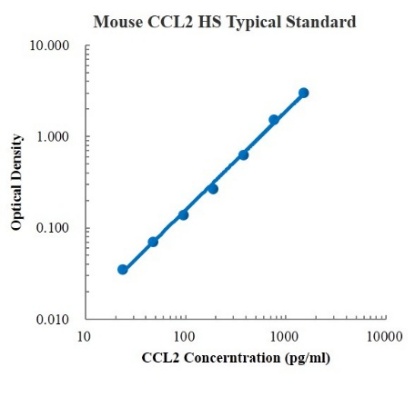
分子信息
CCL2 分子靶点信息概述
- 分子名:CCL2, C-C motif chemokine ligand 2
- 基因家族:Chemokine ligands
- 别名:MCP1; MCP-1; MCAF; SMC-CF; GDCF-2; HC11; MGC9434
- 曾用名:SCYA2
- 全称:monocyte chemotactic protein 1, homologous to mouse Sig-je; monocyte chemoattractant protein-1; monocyte chemotactic and activating factor; monocyte secretory protein JE; small inducible cytokine subfamily A (Cys-Cys), member 2; small inducible cytokine A2 (monocyte chemotactic protein 1, homologous to mouse Sig-je); chemokine (C-C motif) ligand 2
CCL2 分子靶点综述
趋化因子配体2(CCL2),又名单核细胞趋化蛋白1(MCP-1),是CC趋化因子家族的小分子量细胞因子。CCL2通过蛋白聚糖的粘多糖侧链锚定到内皮细胞的质膜上,主要由单核细胞、巨噬细胞和树突状细胞分泌。CCL2可招募单核细胞、记忆性T细胞和树突状细胞到组织损伤或感染引起的炎症位点。CCL2参与以单核细胞浸润为特征的一些疾病发病机制,如银屑病、类风湿性关节炎和动脉粥样硬化。CCL2参与发生在中枢神经系统的多种疾病的神经炎症过程,表现为神经元变性。
小鼠 Mouse Ccl2 分子靶点信息
- 分子名:Ccl2, chemokine (C-C motif) ligand 2
- 别称:
- AI323594
- expressed sequence AI323594
- HC11
- MCAF
- MCP-1
- MCP1
- monocyte chemoattractant protein-1
- monocyte chemotactic protein
- Scya2
- Sigje
- small inducible cytokine A2
- small inducible gene JE
- SMC-CF
- 基因序列:NCBI_Gene: 20296
- 蛋白序列:
小鼠 Mouse Ccl2 靶点分子功能(预测)
Enables CCR2 chemokine receptor binding activity and cytokine activity. Involved in several processes, including cellular response to cytokine stimulus; positive regulation of leukocyte chemotaxis; and positive regulation of macromolecule metabolic process. Acts upstream of or within response to bacterium and response to wounding. Located in extracellular space. Is expressed in several structures, including heart; intestine smooth muscle circular layer; nervous system; retina; and vibrissa. Used to study age related macular degeneration. Human ortholog(s) of this gene implicated in several diseases, including Henoch-Schoenlein purpura; aggressive periodontitis; autoimmune disease (multiple); gastrointestinal system cancer (multiple); and tuberculosis (multiple). Orthologous to human CCL2 (C-C motif chemokine ligand 2).
引用文献统计
该产品被引用的文献总数为:2
- Telotristat Etiprate alleviates rheumatoid arthritis by targeting LGALS3 and affecting MAPK signaling
影响因子:1.3刊物:Intractable & Rare Diseases Research发表日期:2023-03-04 - Engineered Apoptosis-Bioinspired Nanoparticles Initiate Immune Cascade for Cancer Immunotherapy of Malignant Ascites
影响因子:9.5刊物:ACS Applied Materials & Interfaces发表日期:2023-02-14
ELISA标准品操作常见问题查看更多ELISA标准品操作步骤技术文章
查看更多ELISA标准品操作步骤技术文章
操作步骤
文章目录[隐藏]
- ELISA操作常见问题
- 小心!你的 ELISA 试剂盒可能是假的
- 开学学习计划,如何收集ELISA检测样本——细胞
- 开学学习计划,如何选择ELISA试剂盒
- 开学学习计划,ELISA从新手到入门!
- 一文掌握ELISA实验显色判断、数据分析及标曲拟合
- 血清OR血浆,哪个是ELISA的菜
- ELISA通关必备丨数据篇丨标准曲线不佳
- ELISA通关必备丨操作篇丨常见问题及解决方案
- ELISA通关必备丨操作篇丨溶解与稀释标准品
- ELISA通关必备丨样本篇丨不常见样本
- ELISA通关必备丨样本篇丨常见样本丨细胞
- ELISA通关必备丨如何选择试剂盒
- ELISA通关必备丨基础知识
- 真?假?ELISA试剂盒选择要小心
- ELISA常见类型一 | 双抗夹心法,你要的都在这里!
- ELISA常见类型二 | 竞争法,五分钟搞定!
- 叮!联科向您投递了个ELISA实验操作干货包,请查收~
- 【视频】ELISA实验操作步骤演示视频教程
- ELISA 组织样本的处理—大鼠组织
- 【视频】ELISA实验原理与常见问题分析
- 查看更多ELISA操作相关问题
ELISA操作常见问题
查看更多ELISA操作相关问题
引用文献
文章目录[隐藏]
- 5-Methoxyflavone alleviates LPS-mediated lung injury by promoting Nrf2-mediated the suppression of NOX4/TLR4 axis in bronchial epithelial cells and M1 polarization in macrophages
- Consumption of Saturated Fatty Acids-Rich Lard Benefits Recovery of Experimental Arthritis by Activating PPAR-γ
- Preferred M2 Polarization by ASC-Based Hydrogel Accelerated Angiogenesis and Myogenesis in Volumetric Muscle Loss Rats
- MyD88-Dependent Signaling Is Required for HOIP Deficiency–Induced Autoinflammation
- Effects of divalent cations on the physical, conformational and immunological properties of bovine allergen β-lactoglobulin aggregates
- Effective Model of Food Allergy in Mice Sensitized with Ovalbumin and Freud’s Adjuvant
- Eotaxin‑1 and MCP‑1 serve as circulating indicators in response to power frequency electromagnetic field exposure in mice
- Card9 protects fungal peritonitis through regulating Malt1-mediated activation of autophagy in macrophage
- Mep1a contributes to Ang II-induced cardiac remodeling by promoting cardiac hypertrophy, fibrosis and inflammation
- Dietary Supplementation of Foxtail Millet Ameliorates Colitis-Associated Colorectal Cancer in Mice via Activation of Gut Receptors and Suppression of the STAT3 Pathway
- pH-Switchable Antimicrobial Supramolecular Hydrogels for Synergistically Eliminating Biofilm and Promoting Wound Healing
- Micronized Palmitoylethanolamide Ameliorates Methionine- and Choline-Deficient Diet-Induced Nonalcoholic Steatohepatitis via Inhibiting Inflammation and Restoring Autophagy
- Alanyl-Glutamine Protects Mice against Methionine- and Choline-Deficient-Diet-Induced Steatohepatitis and Fibrosis by Modulating Oxidative Stress and Inflammation
- TNF-Like Ligand 1 Aberrance Aggravates Nonalcoholic Steatohepatitis via M1 Macrophage Polarization
- Colitis aggravated by Mrgprb2 knockout is associated with altered immune response, intestinal barrier function and gut microbiota
- Watsonianone A from Rhodomyrtus tomentosa Fruit Attenuates Respiratory-Syncytial-Virus-Induced Inflammation In Vitro
- Loganin prevents BV-2 microglia cells from Aβ1-42-induced inflammation via regulating TLR4/TRAF6/NF-κB axis
- Indium oxide nanoparticles induce lung intercellular toxicity between bronchial epithelial cells and macrophages
- Overexpressing six-transmembrane protein of prostate 2 (STAMP2) alleviates sepsis-induced acute lung injury probably by hindering M1 macrophage polarization via the NF-κB pathway
- Molecular mechanisms associated with macrophage activation by Rhizoma Atractylodis Macrocephalae polysaccharides
- TAB1 regulates glycolysis and activation of macrophages in diabetic nephropathy
- Administration of isoliquiritigenin prevents nonalcoholic fatty liver disease through a novel IQGAP2-CREB-SIRT1 axis
- High-mobility group box 1 protein participates in acute lung injury by activating protein kinase R and inducing M1 polarization
- GTS-21 Reduces Inflammation in Acute Lung Injury by Regulating M1 Polarization and Function of Alveolar Macrophages
- Branched-chain amino acid transaminase 1 inhibition attenuates childhood asthma in mice by effecting airway remodeling and autophagy
- Modulation of the Crosstalk between Schwann Cells and Macrophages for Nerve Regeneration: A Therapeutic Strategy Based on a Multifunctional Tetrahedral Framework Nucleic Acids System
- Chemical component and in vitro protective effects of Matricaria chamomilla (L.) against lipopolysaccharide insult
- OLFM4 Regulates Lung Epithelial Cell Function in Sepsis-Associated ARDS/ALI via LDHA-Mediated NF-κB Signaling
- MiR-126a-5p limits the formation of abdominal aortic aneurysm in mice and decreases ADAMTS-4 expression
- A Frog-Derived Cathelicidin Peptide with Dual Antimicrobial and Immunomodulatory Activities Effectively Ameliorates Staphylococcus aureus-Induced Peritonitis in Mice
- Remodeling on adipocytic physiology of organophosphorus esters in mature adipocytes
- Anti-inflammatory activity of the Tongmai Yangxin pill in the treatment of coronary heart disease is associated with estrogen receptor and NF-κB signaling pathway
- Exosome-mediated delivery of Cas9 ribonucleoprotein complexes for tissue-specific gene therapy of liver diseases
- Fluorous-Tagged Peptide Nanoparticles Ameliorate Acute Lung Injury via Lysosomal Stabilization and Inflammation Inhibition in Pulmonary Macrophages
- A reduction of Syndecan-4 in macrophages promotes atherosclerosis by aggravating the proinflammatory capacity of macrophages
- HMGB1 aggravates lipopolysaccharide-induced acute lung injury through suppressing the activity and function of Tregs
- GYY4137 ameliorates sepsis-induced cardiomyopathy via NLRP3 pathway
- Platelet-derived growth factor B attenuates lethal sepsis through inhibition of inflammatory responses
- Bovine α-lactalbumin hydrolysates (α-LAH) attenuate high-fat diet induced nonalcoholic fatty liver disease by modulating hepatic lipid metabolism in C57BL/6J mice
- CX3CL1 Recruits NK Cells Into the Central Nervous System and Aggravates Brain Injury of Mice Caused by Angiostrongylus cantonensis Infection
- Glycyrrhetinic acid regulates impaired macrophage autophagic flux in the treatment of non-alcoholic fatty liver disease
- MiR-340 suppresses CCl4-induced acute liver injury through exerting anti-inflammation targeting Sigirr
- Loss of Annexin A1 in macrophages restrains efferocytosis and remodels immune microenvironment in pancreatic cancer by activating the cGAS/STING pathway
- M2 macrophage infusion ameliorates diabetic glomerulopathy via the JAK2/STAT3 pathway in db/db mice
- PCLAF induces bone marrow adipocyte senescence and contributes to skeletal aging
- Periodontal pathogen Fusobacterium nucleatum infection accelerates hepatic steatosis in high-fat diet-fed ApoE knockout mice by inhibiting Nrf2/Keap1 signaling
- Systematic sequence characterization of enzymatic-derived soybean peptides for precision enhancement of anti-inflammatory properties
- Epithelial cells derived exosomal miR-203a-3p facilitates stromal inflammation of type IIIA chronic prostatitis/chronic pelvic pain syndrome by targeting DUSP5 and increasing MCP-1 generation
- NLRP3 inflammasome-mediated premature immunosenescence drives diabetic vascular aging dependent on the induction of perivascular adipose tissue dysfunction
- A dual-targeting therapeutic nanobubble for imaging-guided atherosclerosis treatment
- An amphibian-derived cathelicidin accelerates cutaneous wound healing through its main regulatory effect on phagocytes
- New insight into prurigo nodularis: Proadrenomedullin N-terminal 20 peptide mediates mouse mast cell activation via Mrgprb2
- Myeloid-derived grancalcin instigates obesity-induced insulin resistance and metabolic inflammation in male mice
- TIFA contributes to periodontitis in diabetic mice via activating the NF?κB signaling pathway
- Regulator of G protein signaling protein 6 alleviates acute lung injury by inhibiting inflammation and promoting cell self-renewal in mice
- Manganese@Albumin Nanocomplex and Its Assembled Nanowire Activate TLR4-Dependent Signaling Cascades of Macrophages
- MMP10 alleviates non-alcoholic steatohepatitis by regulating macrophage M2 polarization
- Alanyl-Glutamine Dipeptide Attenuates Non-Alcoholic Fatty Liver Disease Induced by a High-Fat Diet in Mice by Improving Gut Microbiota Dysbiosis
- Allicin ameliorates sepsis-induced acute kidney injury through Nrf2/HO-1 signaling pathway
- Ferroptosis of macrophages facilitates bone loss in apical periodontitis via NRF2/FSP1/ROS pathway
- Protective effect of phosphorylated Athyrium multidentatum (Doll.) Ching polysaccharide on vascular endothelial cells in vitro and in vivo
- The activation of CaN/NFAT signaling pathway in macrophages aggravated Lactobacillus casei cell wall extract-induced Kawasaki disease vasculitis
- Effects of total alkaloids from Alstonia scholaris (L.) R. Br. on ovalbumin-induced asthma mice
- ATP-citrate lyase controls endothelial gluco-lipogenic metabolism and vascular inflammation in sepsis-associated organ injury
- Trichosanates A–G and cucurbitacins W–Y, anticomplement monoterpenoids and cucurbitane-type triterpenoids from the pericarps of Trichosanthes kirilowii
- LMCD1 is involved in tubulointerstitial inflammation in the early phase of renal fibrosis by promoting NFATc1-mediated NLRP3 activation
- Macrophage scavenger receptor A1 antagonizes abdominal aortic aneurysm via upregulating IRG1
- Exogenous Nucleotides Ameliorate Ageing-Related Intestinal Inflammation in Senescence-Accelerated Mouse Prone-8 (SAMP8) Mice
- The efficacy and mechanism of salmeterol against influenza A virus in vitro and in vivo
- Discovery of the First-in-Class Intestinal Restricted FXR and FABP1 Dual Modulator ZLY28 for the Treatment of Nonalcoholic Fatty Liver Disease
- P2rx1 deficiency alleviates acetaminophen-induced acute liver failure by regulating the STING signaling pathway
- Inhibition of interleukin-6 trans-signaling improves survival and prevents cognitive impairment in a mouse model of sepsis
- Oroxylin A inhibited autoimmune hepatitis-induced liver injury and shifted Treg/Th17 balance to Treg differentiation
- Prevention of Bleomycin-Induced Pulmonary Inflammation and Fibrosis in Mice by Bilobalide
- Myricetin alleviated immunologic contact urticaria and mast cell degranulation via the PI3K/Akt/NF-κB pathway
- TREM2hi resident macrophages protect the septic heart by maintaining cardiomyocyte homeostasis
- Hypoxia-Inducible Factor 2α Attenuates Renal Ischemia-Reperfusion Injury by Suppressing CD36-Mediated Lipid Accumulation in Dendritic Cells in a Mouse Model
5-Methoxyflavone alleviates LPS-mediated lung injury by promoting Nrf2-mediated the suppression of NOX4/TLR4 axis in bronchial epithelial cells and M1 polarization in macrophages
Consumption of Saturated Fatty Acids-Rich Lard Benefits Recovery of Experimental Arthritis by Activating PPAR-γ
Preferred M2 Polarization by ASC-Based Hydrogel Accelerated Angiogenesis and Myogenesis in Volumetric Muscle Loss Rats
MyD88-Dependent Signaling Is Required for HOIP Deficiency–Induced Autoinflammation
Effects of divalent cations on the physical, conformational and immunological properties of bovine allergen β-lactoglobulin aggregates
Effective Model of Food Allergy in Mice Sensitized with Ovalbumin and Freud’s Adjuvant
Eotaxin‑1 and MCP‑1 serve as circulating indicators in response to power frequency electromagnetic field exposure in mice
Card9 protects fungal peritonitis through regulating Malt1-mediated activation of autophagy in macrophage
Mep1a contributes to Ang II-induced cardiac remodeling by promoting cardiac hypertrophy, fibrosis and inflammation
Dietary Supplementation of Foxtail Millet Ameliorates Colitis-Associated Colorectal Cancer in Mice via Activation of Gut Receptors and Suppression of the STAT3 Pathway
pH-Switchable Antimicrobial Supramolecular Hydrogels for Synergistically Eliminating Biofilm and Promoting Wound Healing
Micronized Palmitoylethanolamide Ameliorates Methionine- and Choline-Deficient Diet-Induced Nonalcoholic Steatohepatitis via Inhibiting Inflammation and Restoring Autophagy
Alanyl-Glutamine Protects Mice against Methionine- and Choline-Deficient-Diet-Induced Steatohepatitis and Fibrosis by Modulating Oxidative Stress and Inflammation
TNF-Like Ligand 1 Aberrance Aggravates Nonalcoholic Steatohepatitis via M1 Macrophage Polarization
Colitis aggravated by Mrgprb2 knockout is associated with altered immune response, intestinal barrier function and gut microbiota
Watsonianone A from Rhodomyrtus tomentosa Fruit Attenuates Respiratory-Syncytial-Virus-Induced Inflammation In Vitro
Loganin prevents BV-2 microglia cells from Aβ1-42-induced inflammation via regulating TLR4/TRAF6/NF-κB axis
Indium oxide nanoparticles induce lung intercellular toxicity between bronchial epithelial cells and macrophages
Overexpressing six-transmembrane protein of prostate 2 (STAMP2) alleviates sepsis-induced acute lung injury probably by hindering M1 macrophage polarization via the NF-κB pathway
Molecular mechanisms associated with macrophage activation by Rhizoma Atractylodis Macrocephalae polysaccharides
TAB1 regulates glycolysis and activation of macrophages in diabetic nephropathy
Administration of isoliquiritigenin prevents nonalcoholic fatty liver disease through a novel IQGAP2-CREB-SIRT1 axis
High-mobility group box 1 protein participates in acute lung injury by activating protein kinase R and inducing M1 polarization
GTS-21 Reduces Inflammation in Acute Lung Injury by Regulating M1 Polarization and Function of Alveolar Macrophages
Branched-chain amino acid transaminase 1 inhibition attenuates childhood asthma in mice by effecting airway remodeling and autophagy
Modulation of the Crosstalk between Schwann Cells and Macrophages for Nerve Regeneration: A Therapeutic Strategy Based on a Multifunctional Tetrahedral Framework Nucleic Acids System
Chemical component and in vitro protective effects of Matricaria chamomilla (L.) against lipopolysaccharide insult
OLFM4 Regulates Lung Epithelial Cell Function in Sepsis-Associated ARDS/ALI via LDHA-Mediated NF-κB Signaling
MiR-126a-5p limits the formation of abdominal aortic aneurysm in mice and decreases ADAMTS-4 expression
A Frog-Derived Cathelicidin Peptide with Dual Antimicrobial and Immunomodulatory Activities Effectively Ameliorates Staphylococcus aureus-Induced Peritonitis in Mice
Remodeling on adipocytic physiology of organophosphorus esters in mature adipocytes
Anti-inflammatory activity of the Tongmai Yangxin pill in the treatment of coronary heart disease is associated with estrogen receptor and NF-κB signaling pathway
Exosome-mediated delivery of Cas9 ribonucleoprotein complexes for tissue-specific gene therapy of liver diseases
Fluorous-Tagged Peptide Nanoparticles Ameliorate Acute Lung Injury via Lysosomal Stabilization and Inflammation Inhibition in Pulmonary Macrophages
A reduction of Syndecan-4 in macrophages promotes atherosclerosis by aggravating the proinflammatory capacity of macrophages
HMGB1 aggravates lipopolysaccharide-induced acute lung injury through suppressing the activity and function of Tregs
GYY4137 ameliorates sepsis-induced cardiomyopathy via NLRP3 pathway
Platelet-derived growth factor B attenuates lethal sepsis through inhibition of inflammatory responses
Bovine α-lactalbumin hydrolysates (α-LAH) attenuate high-fat diet induced nonalcoholic fatty liver disease by modulating hepatic lipid metabolism in C57BL/6J mice
CX3CL1 Recruits NK Cells Into the Central Nervous System and Aggravates Brain Injury of Mice Caused by Angiostrongylus cantonensis Infection
Glycyrrhetinic acid regulates impaired macrophage autophagic flux in the treatment of non-alcoholic fatty liver disease
MiR-340 suppresses CCl4-induced acute liver injury through exerting anti-inflammation targeting Sigirr
Loss of Annexin A1 in macrophages restrains efferocytosis and remodels immune microenvironment in pancreatic cancer by activating the cGAS/STING pathway
M2 macrophage infusion ameliorates diabetic glomerulopathy via the JAK2/STAT3 pathway in db/db mice
PCLAF induces bone marrow adipocyte senescence and contributes to skeletal aging
Periodontal pathogen Fusobacterium nucleatum infection accelerates hepatic steatosis in high-fat diet-fed ApoE knockout mice by inhibiting Nrf2/Keap1 signaling
Systematic sequence characterization of enzymatic-derived soybean peptides for precision enhancement of anti-inflammatory properties
Epithelial cells derived exosomal miR-203a-3p facilitates stromal inflammation of type IIIA chronic prostatitis/chronic pelvic pain syndrome by targeting DUSP5 and increasing MCP-1 generation
NLRP3 inflammasome-mediated premature immunosenescence drives diabetic vascular aging dependent on the induction of perivascular adipose tissue dysfunction
A dual-targeting therapeutic nanobubble for imaging-guided atherosclerosis treatment
An amphibian-derived cathelicidin accelerates cutaneous wound healing through its main regulatory effect on phagocytes
New insight into prurigo nodularis: Proadrenomedullin N-terminal 20 peptide mediates mouse mast cell activation via Mrgprb2
Myeloid-derived grancalcin instigates obesity-induced insulin resistance and metabolic inflammation in male mice
TIFA contributes to periodontitis in diabetic mice via activating the NF?κB signaling pathway
Regulator of G protein signaling protein 6 alleviates acute lung injury by inhibiting inflammation and promoting cell self-renewal in mice
Manganese@Albumin Nanocomplex and Its Assembled Nanowire Activate TLR4-Dependent Signaling Cascades of Macrophages
MMP10 alleviates non-alcoholic steatohepatitis by regulating macrophage M2 polarization
Alanyl-Glutamine Dipeptide Attenuates Non-Alcoholic Fatty Liver Disease Induced by a High-Fat Diet in Mice by Improving Gut Microbiota Dysbiosis
Allicin ameliorates sepsis-induced acute kidney injury through Nrf2/HO-1 signaling pathway
Ferroptosis of macrophages facilitates bone loss in apical periodontitis via NRF2/FSP1/ROS pathway
Protective effect of phosphorylated Athyrium multidentatum (Doll.) Ching polysaccharide on vascular endothelial cells in vitro and in vivo
The activation of CaN/NFAT signaling pathway in macrophages aggravated Lactobacillus casei cell wall extract-induced Kawasaki disease vasculitis
Effects of total alkaloids from Alstonia scholaris (L.) R. Br. on ovalbumin-induced asthma mice
ATP-citrate lyase controls endothelial gluco-lipogenic metabolism and vascular inflammation in sepsis-associated organ injury
Trichosanates A–G and cucurbitacins W–Y, anticomplement monoterpenoids and cucurbitane-type triterpenoids from the pericarps of Trichosanthes kirilowii
LMCD1 is involved in tubulointerstitial inflammation in the early phase of renal fibrosis by promoting NFATc1-mediated NLRP3 activation
Macrophage scavenger receptor A1 antagonizes abdominal aortic aneurysm via upregulating IRG1
Exogenous Nucleotides Ameliorate Ageing-Related Intestinal Inflammation in Senescence-Accelerated Mouse Prone-8 (SAMP8) Mice
The efficacy and mechanism of salmeterol against influenza A virus in vitro and in vivo
Discovery of the First-in-Class Intestinal Restricted FXR and FABP1 Dual Modulator ZLY28 for the Treatment of Nonalcoholic Fatty Liver Disease
P2rx1 deficiency alleviates acetaminophen-induced acute liver failure by regulating the STING signaling pathway
Inhibition of interleukin-6 trans-signaling improves survival and prevents cognitive impairment in a mouse model of sepsis
Oroxylin A inhibited autoimmune hepatitis-induced liver injury and shifted Treg/Th17 balance to Treg differentiation
Prevention of Bleomycin-Induced Pulmonary Inflammation and Fibrosis in Mice by Bilobalide
Myricetin alleviated immunologic contact urticaria and mast cell degranulation via the PI3K/Akt/NF-κB pathway
TREM2hi resident macrophages protect the septic heart by maintaining cardiomyocyte homeostasis
Hypoxia-Inducible Factor 2α Attenuates Renal Ischemia-Reperfusion Injury by Suppressing CD36-Mediated Lipid Accumulation in Dendritic Cells in a Mouse Model

